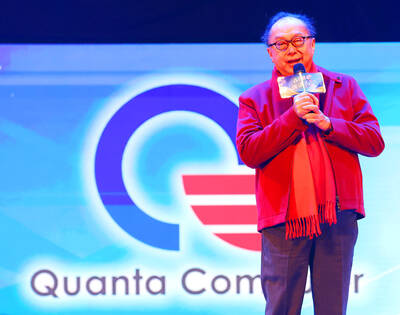Sony Corp, the world's second-largest consumer electronics maker, and Samsung Electronics Co started shipments of their largest liquid-crystal-displays (LCD) yesterday, a year after Sharp Corp began supplying similar-sized panels.
The S-LCD Corp venture between Sony and Samsung started production of LCDs last month using so-called eighth-generation glass sheets, used to make television sets measuring as large as 52 inches. S-LCD will produce 50,000 LCD panels a month by the end of this year, Tokyo-based Sony said in a statement.
"Our sights are now on LCD TVs in the 50-inch class and we aim to lead that segment," S-LCD CEO Chang Won-kie said in a statement.
The first panels shipped were 52 inches.
The new facility is capable of manufacturing some of the world's largest substrates -- the glass sheets used to make screens for flat screen televisions -- measuring 2,200mm (88 inches) by 2,500mm.
Samsung and Sony founded S-LCD in 2004 to produce panels to meet demand for flat screen tele-visions, which has soared in recent years as consumers give up bulky cathode-ray tube sets for the sleeker versions.
Succeeding generations of plants use larger glass substrates to cut LCD panels, thereby boosting output and eventually helping LCD makers cut manufacturing costs.
S-LCD, based in Asan, about 90km south of Seoul, said the new line would reach full monthly capacity of 50,000 panels by year-end.
Sony and Samsung, the world's largest LCD supplier, are tapping demand for larger, high-definition televisions amid competition from LCD makers including Sharp, Japan's biggest maker of LCD panels, and Matsushita Electric Industrial Co, the world's largest plasma TV maker. Both Sharp and Matsushita, maker of the Panasonic brand, are investing in bigger factories to make screens measuring 60 inches or more.
Osaka-based Sharp, which started its eighth-generation factory last August, is investing ?380 billion (US$3.3 billion) in the industry's most advanced manufacturing factory in Sakai City, Osaka. The 10th-generation plant will start production by March 2010.
Matsushita, based in Osaka, plans to double monthly plasma display production in two years to 1.26 million panels a month by May 2009 at its Amagasaki factories in Hyogo Prefecture.
Sony fell to third place last quarter among global television makers after the company posted the slowest growth in LCD TV sales, according to market researcher DisplaySearch.
Suwon, South Korea-based Samsung ranked first, while Matsushita was fifth.
Sharp wasn't in the top five global TV ranking by sales, according to the researcher.
Shares of Sony fell 0.6 percent to ?5,380 on the Tokyo Stock Exchange, while the benchmark Nikkei 225 Stock Average declined 0.1 percent. Sharp was unchanged at ?2,010, while Matsushita declined 1.5 percent to ?2,000.

Quanta Computer Inc (廣達) chairman Barry Lam (林百里) is expected to share his views about the artificial intelligence (AI) industry’s prospects during his speech at the company’s 37th anniversary ceremony, as AI servers have become a new growth engine for the equipment manufacturing service provider. Lam’s speech is much anticipated, as Quanta has risen as one of the world’s major AI server suppliers. The company reported a 30 percent year-on-year growth in consolidated revenue to NT$1.41 trillion (US$43.35 billion) last year, thanks to fast-growing demand for servers, especially those with AI capabilities. The company told investors in November last year that

Intel Corp has named Tasha Chuang (莊蓓瑜) to lead Intel Taiwan in a bid to reinforce relations between the company and its Taiwanese partners. The appointment of Chuang as general manager for Intel Taiwan takes effect on Thursday, the firm said in a statement yesterday. Chuang is to lead her team in Taiwan to pursue product development and sales growth in an effort to reinforce the company’s ties with its partners and clients, Intel said. Chuang was previously in charge of managing Intel’s ties with leading Taiwanese PC brand Asustek Computer Inc (華碩), which included helping Asustek strengthen its global businesses, the company

Taiwanese suppliers to Taiwan Semiconductor Manufacturing Co. (TSMC, 台積電) are expected to follow the contract chipmaker’s step to invest in the US, but their relocation may be seven to eight years away, Minister of Economic Affairs J.W. Kuo (郭智輝) said yesterday. When asked by opposition Chinese Nationalist Party (KMT) Legislator Niu Hsu-ting (牛煦庭) in the legislature about growing concerns that TSMC’s huge investments in the US will prompt its suppliers to follow suit, Kuo said based on the chipmaker’s current limited production volume, it is unlikely to lead its supply chain to go there for now. “Unless TSMC completes its planned six

TikTok abounds with viral videos accusing prestigious brands of secretly manufacturing luxury goods in China so they can be sold at cut prices. However, while these “revelations” are spurious, behind them lurks a well-oiled machine for selling counterfeit goods that is making the most of the confusion surrounding trade tariffs. Chinese content creators who portray themselves as workers or subcontractors in the luxury goods business claim that Beijing has lifted confidentiality clauses on local subcontractors as a way to respond to the huge hike in customs duties imposed on China by US President Donald Trump. They say this Chinese decision, of which Agence